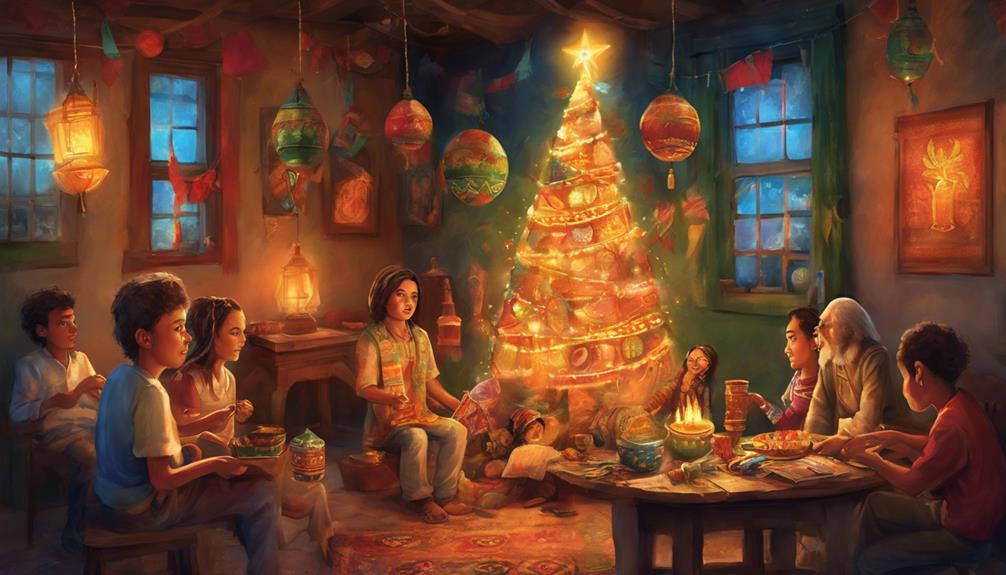The diversity of holiday traditions worldwide offers a window into the rich tapestry of global cultures. From the elaborate Three Kings Day celebrations in Spain to the awe-inspiring Diwali festivities in India, each holiday encapsulates a unique blend of history, beliefs, and customs. Exploring how holidays differ around the world unveils the intricate ways in which societies mark special occasions and pass down traditions through generations. As we delve into the various winter celebrations, religious festivals, and harvest traditions, a world of enchanting cultural practices and historical significance awaits.
Key Takeaways
- Winter celebrations vary globally, from candle placements in Finland to Diwali in India and Eid Al-Fitr in Muslim communities.
- Cultural and religious festivals worldwide highlight diverse traditions, values, and community unity.
- New Year traditions across cultures differ, from Omisoka in Japan to Hogmanay in Scotland, showcasing unique customs.
- Harvest festivals and seasonal celebrations honor cultural traditions, like Festa Junina in Brazil and Maslenitsa in Russia, reflecting seasonal changes.
Winter Celebrations in Different Cultures
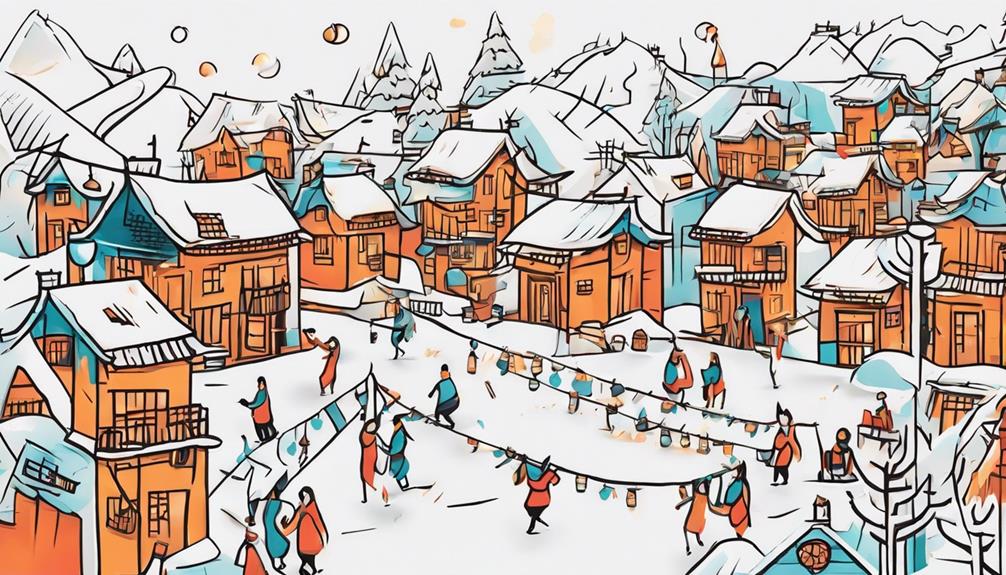
Winter celebrations in different cultures vary widely in their traditions and significance, reflecting the unique cultural values and beliefs of each society. In Finland, Christmas Eve is a time of remembrance and peace, where families place candles in the snow next to graves as a way to honor and remember their departed loved ones. On the other hand, the Diwali Festival in India, celebrated in autumn, symbolizes the triumph of good over evil and light over darkness. Similarly, Eid Al-Fitr, marking the end of Ramadan, is observed in Muslim communities with prayer, breakfast gatherings, gift-giving, and visits to cemeteries as a way to remember and honor the deceased.
These winter celebrations not only bring communities together but also serve as a way to connect with the past and uphold cultural traditions. Whether through cemetery visits in Eid Al-Fitr or candle placements on Christmas Eve, these rituals offer a glimpse into the diverse cultural tapestry of the world's winter celebrations.
Religious Vs. Cultural Festivals Worldwide
In examining festivals worldwide, a clear distinction can be drawn between religious and cultural celebrations based on their respective focuses and purposes. Religious festivals, such as Christmas for Christians, often carry specific spiritual significance deeply rooted in faith traditions. These holidays typically involve rituals, prayers, and ceremonies that commemorate sacred events or teachings of a particular religion. On the other hand, cultural festivals like the Chinese New Year focus on showcasing the customs, practices, and heritage of a specific group or community. These celebrations highlight elements such as art, music, dance, and cuisine that are integral to the identity of the culture.
While religious festivals are primarily centered around spiritual beliefs and doctrines, cultural festivals evolve over time to reflect the changing values and trends within a community. They serve as a way to preserve and promote cultural heritage, fostering a sense of unity and belonging among participants. Both types of festivals play an essential role in celebrating and maintaining the rich tapestry of traditions that make up our diverse global society.
Traditions for New Year Celebrations
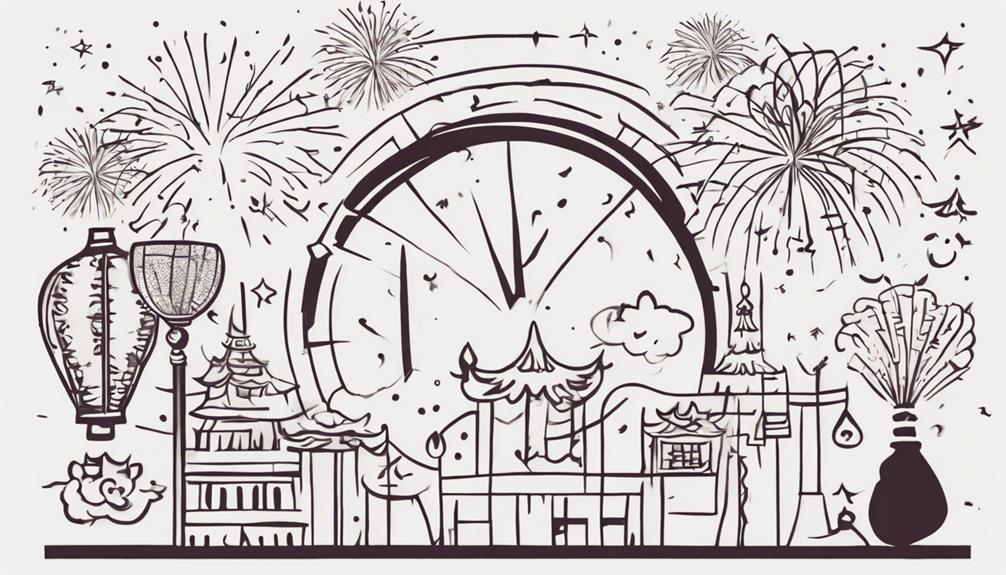
New Year celebrations across different cultures are marked by a variety of unique traditions and customs that reflect the diverse ways in which people around the world welcome the beginning of a new year. Here is a comparison of some fascinating New Year traditions from around the world:
| Country | Tradition |
|---|---|
| Japan | Omisoka is celebrated with deep cleaning and spending time with loved ones. |
| China | Chinese New Year involves decorating with lanterns and feasting for new beginnings and prosperity. |
| Scotland | Hogmanay traditions include first-footing, where the first person to enter a home after midnight brings gifts. |
| Ethiopia | Enkutatash, on September 11, involves gift-giving and feasting to mark the end of the rainy season. |
| Spain | New Year's Eve traditions include eating 12 grapes at midnight for luck in the coming year. |
These traditions showcase the cultural richness and diversity of New Year celebrations globally, emphasizing values such as togetherness, prosperity, and good fortune through practices like gift-giving and feasting.
Harvest Festivals Across Various Regions
Harvest festivals across various regions globally serve as cultural markers that signify the transition between seasons and the significance of agricultural abundance within different communities. These celebrations are deeply rooted in traditions that honor the harvest season and the food it provides. Here are some interesting examples:
- Festa Junina in Brazil celebrates the end of summer with bonfires and corn-based foods.
- Maslenitsa in Russia, also known as Pancake Week, symbolizes the end of winter and the coming of spring through snowball fights and burning effigies.
- Christmas in Finland, observed in winter, involves placing candles on snow-covered graves on Christmas Eve to honor ancestors and symbolize resurrection.
- Harvest festivals like Festa Junina, Maslenitsa, and Christmas in Finland highlight the connection between seasonal changes, cultural traditions, and the importance of food in different parts of the world. These celebrations not only mark the harvest but also serve as a reminder of the light and abundance that each season brings.
Festivals of Lights in Different Countries
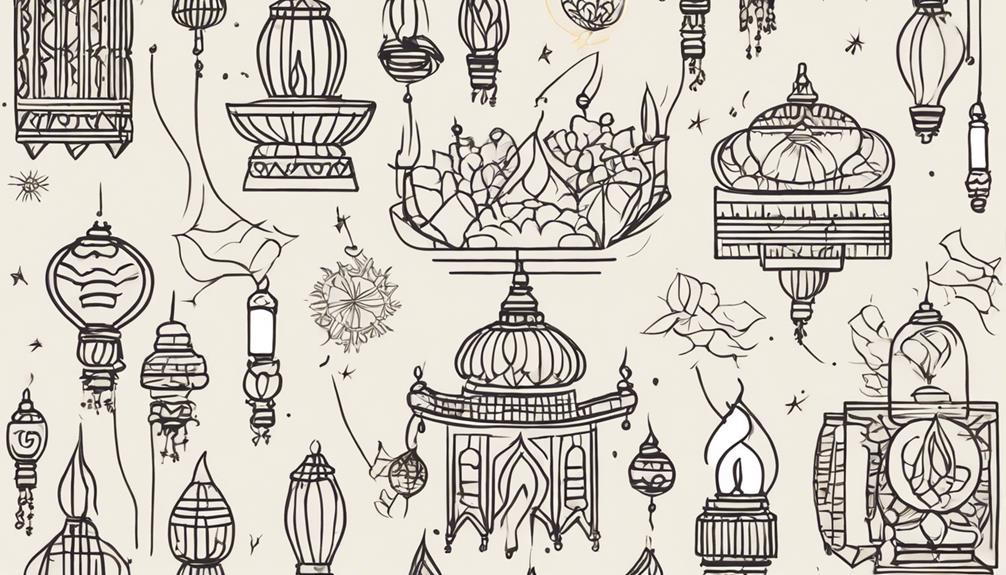
The worldwide observation of Festivals of Lights showcases the symbolic significance of illumination across diverse cultures and traditions. Diwali in India, known as the Festival of Lights, symbolizes the victory of light over darkness. Similarly, Hanukkah, a Jewish holiday, celebrates the triumph of light with the lighting of the menorah. Loy Krathong in Thailand involves floating lotus-shaped baskets on water illuminated by candles to honor the goddess of water. In Colombia, Christmas includes the Alumbrados display, where millions of lights and decorations adorn cities. China marks the end of Chinese New Year celebrations with the Lantern Festival, featuring colorful lantern displays and light shows.
| Festival of Lights | Country | Symbolism |
|---|---|---|
| Diwali | India | Victory of light over darkness |
| Hanukkah | Jewish | Triumph of light with menorah |
| Loy Krathong | Thailand | Honoring goddess of water with floating candles |
| Alumbrados | Colombia | Millions of lights and decorations in cities |
| Lantern Festival | China | Colorful lantern displays and light shows |
Unique Holiday Customs Around the Globe
Various cultures worldwide showcase unique holiday customs, from the vibrant attire worn during celebrations to the diverse array of festive foods consumed. These customs often reflect the rich history and traditions of each society, providing insight into the values and beliefs of the people. Exploring these distinctive practices can offer a deeper understanding of the cultural significance attached to holidays across the globe.
Diverse Festive Foods
Celebrating holidays around the world involves a rich tapestry of unique festive foods that reflect the cultural diversity and traditions of different regions.
- In Mexico, traditional holiday foods include tamales, pozole, and champurrado, enjoyed during festive celebrations.
- Russians celebrate Christmas with Peljmeni, a dumpling dish filled with minced meat and herbs, reflecting their unique holiday cuisine.
- Hanukkah traditions feature latkes, fried potato pancakes with various toppings, enjoyed by Jewish families during the holiday.
- Spanish holiday traditions include unique dishes like seafood paella and turron, adding a special touch to their festive celebrations.
These diverse culinary offerings not only nourish the body but also serve as a means of preserving and passing down cultural heritage through generations.
Colorful Traditional Attire
Reflecting the intricate connection between cultural customs and sartorial expressions, the colorful traditional attire worn during various global holiday celebrations showcases a rich tapestry of unique heritage and symbolism. For instance, during Diwali in India, vibrant sarees and intricately embroidered kurta-pajamas are donned, symbolizing prosperity and joy. In the US, Kwanzaa participants wear colorful African garments like dashikis and kaftans to honor African roots and promote unity. In Mexico's Day of the Dead festivities, elaborate skeleton costumes and face paint pay homage to deceased loved ones with a blend of reverence and festivity. Similarly, during Japan's Hanami, the sight of locals in colorful kimonos and yukatas under cherry blossom trees signifies renewal and the transient nature of life. In contrast, Austrian Krampusnacht features eerie Krampus costumes, complete with intricate masks and fur, embodying a playful yet cautionary spirit to encourage good behavior among children.
Historical Significance of Global Holidays
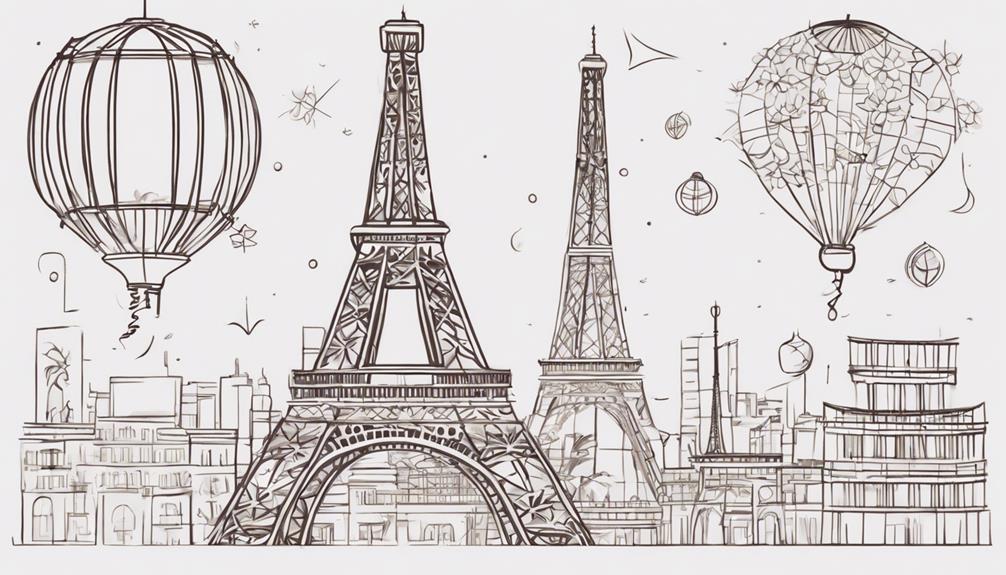
With a deep-rooted historical significance, global holidays have evolved over time to encompass diverse cultural traditions and beliefs. These festivals are celebrated worldwide, each with unique customs and traditional foods that hold significant meaning for those who partake. Many of these holidays symbolize the triumph of good over evil and light over darkness, reflecting universal themes that resonate across different cultures. Here are some examples of global holidays with rich historical backgrounds:
- Three Kings Day: Commemorated in Spain and Latin America, this festival marks the wise men meeting baby Jesus on January 6.
- Christmas Pudding Tradition: In the UK, the tradition of lighting the Christmas pudding on fire with brandy after dinner celebrations dates back through generations.
- Diwali: Originating in India, Diwali signifies the victory of light over darkness and is celebrated by over a billion people worldwide.
- Christmas Markets in Germany: These markets offer traditional food, drink, and ornaments, preserving centuries-old customs and traditions.
Festivities Rooted in Cultural Beliefs
Holidays rooted in cultural beliefs are imbued with symbolism evident in traditions, rituals, and practices. These festivities serve as a means of preserving and transmitting cultural values from one generation to another. Understanding the cultural significance behind these celebrations provides insight into the diverse tapestry of global traditions.
Symbolism in Traditions
Symbolism embedded within holiday traditions serves as a cultural compass, guiding communities through the rich tapestry of beliefs and historical narratives that shape their festivities.
- Symbolism in traditions reflects the values, customs, and stories important to each culture.
- Festivities often carry deep meanings tied to religious, spiritual, or historical events.
- Symbolic elements in holiday traditions help communities connect with their heritage and pass down stories through generations.
- Understanding the symbolism in holiday traditions can provide insight into the values and beliefs of different cultures.
Rituals and Practices
Rooted deeply in cultural beliefs, rituals and practices during festivities serve as integral components of societal cohesion and identity formation. Different countries exhibit unique traditions and celebrations that reflect their cultural heritage. Here is a comparison of rituals and practices during festivals in various countries:
| Country | Festival | Rituals and Practices |
|---|---|---|
| Japan | Hatsumode | Visit shrines/temples to pray for good fortune and health in the new year. |
| India | Holi | Playful tradition of throwing colored powders and water to celebrate spring and victory of good over evil. |
| Mexico | Day of the Dead | Creating vibrant altars with marigolds, candles, sugar skulls, and favorite foods to honor deceased loved ones. |
| China | Dragon Boat Festival | Dragon boat races to commemorate poet Qu Yuan's death, eating zongzi to prevent evil spirits. |
| Italy | Carnevale | Elaborate masquerade balls, parades, and festivities with colorful costumes, masks, and music before Lent. |
Frequently Asked Questions
Are Holidays Different in Different Countries?
In analyzing the variances of holidays in different countries, it is evident that cultural traditions, festive customs, national holidays, religious celebrations, and seasonal events play pivotal roles in shaping these distinctions. The diversity in how holidays are observed globally showcases the unique identities and values of each society. Understanding the nuances of these differences provides valuable insights into the rich tapestry of global cultural practices and beliefs.
Why Do Different Cultures Celebrate Different Holidays?
Different cultures celebrate different holidays due to a combination of factors such as cultural traditions, historical significance, religious beliefs, festive customs, and seasonal variations. These elements influence the creation and observance of unique holidays that reflect the values, history, and beliefs of each community. Cultural diversity, geographical influences, and historical events further contribute to the variety of holidays celebrated globally, showcasing the rich tapestry of traditions and practices around the world.
How Different Cultures Around the World Celebrate Winter Holidays?
When exploring how different cultures around the world celebrate winter holidays, we find a rich tapestry of traditions. These include unique food traditions, festive decorations, religious rituals, family gatherings, and customs that vary widely. From lighting candles in the snow in Finland to building bonfires in Brazil and celebrating the end of winter with pancake festivities in Russia, each culture brings its own flavor to the season's festivities.
What Do All Holidays Have in Common?
At their core, all holidays share a common thread of fostering connection and community. Regardless of cultural traditions, festive decorations, special foods, religious significance, or family gatherings, holidays serve as a unifying force that brings people together in celebration. The essence of holidays lies in the rituals and customs that bind individuals and communities, creating a sense of shared identity and belonging through shared experiences and time-honored practices.
Conclusion
In conclusion, the diverse holiday traditions around the world highlight the richness and complexity of global cultures. From winter celebrations to harvest festivals, each holiday reflects unique customs and beliefs that have been passed down through generations. By exploring the historical significance and cultural roots of these festivities, we gain a deeper understanding of the values and traditions that shape societies across the globe. The juxtaposition of different holiday practices underscores the beauty and diversity of human culture.
